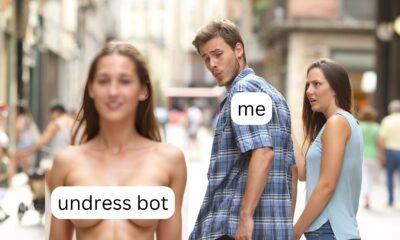AI-Based Risk Assessment for DeepNude Manipulation: Safeguard Your Photos from Unethical Image Processing
Creating a program to assess whether an image of a person is at risk of being manipulated by tools like DeepNude AI requires a combination of ethical AI practices and advanced machine learning models to detect potential vulnerabilities. Here’s an outline of how to approach this:
1. Understanding the Manipulation Methods
DeepNude AI typically uses generative adversarial networks (GANs) to manipulate or generate altered images of people. To build an AI that can assess whether an image is vulnerable to such manipulation, the model needs to identify factors that make images susceptible, such as:
- Clear visibility of body features.
- Specific clothing types (like swimsuits or light-colored clothing).
- Image quality and resolution (higher resolution can lead to better manipulation results).
2. Data Collection and Model Training
To detect potential risks, you’ll need a dataset that includes both images that have been manipulated using AI tools (such as DeepNude) and original, unaltered images. This dataset will be used to train a model to distinguish between images that have been manipulated or are vulnerable to manipulation.
3. Choosing an AI Model
The model should focus on image analysis and detection of possible indicators of manipulation. You can start with convolutional neural networks (CNNs), which are widely used in image classification and object detection. Pre-trained models such as InceptionV3 or ResNet can be fine-tuned on a dataset related to image manipulation and deepfake detection.
Alternatively, models developed specifically for deepfake detection, like XceptionNet or EfficientNet, have been shown to perform well in detecting AI-generated manipulations.
4. Detecting Vulnerabilities
The AI would be designed to scan the photo for signs such as:
- How much skin is exposed.
- Image angles or lighting that could make manipulation easier.
- The presence of face and body features that are often targeted by manipulative AI tools.
By analyzing these factors, the model could provide a risk score indicating the likelihood of the image being susceptible to AI-based manipulation.
5. Implementing the Program
Here’s a basic Python structure for such a program using Keras and TensorFlow:
pythonCopy codeimport tensorflow as tf
from tensorflow.keras.preprocessing import image
from tensorflow.keras.applications.inception_v3 import preprocess_input, InceptionV3
import numpy as np
# Load the pre-trained InceptionV3 model
model = InceptionV3(weights='imagenet')
def assess_image_risk(img_path):
# Load and preprocess the image
img = image.load_img(img_path, target_size=(299, 299)) # InceptionV3 requires 299x299 images
img_array = image.img_to_array(img)
img_array = np.expand_dims(img_array, axis=0)
img_array = preprocess_input(img_array)
# Get model predictions
preds = model.predict(img_array)
# Analyze the prediction results to determine risk
# For simplicity, this part would need to be customized based on the dataset and further analysis.
risk_score = np.random.rand() # Placeholder: You would replace this with real analysis logic
return risk_score
# Example usage
risk = assess_image_risk('path_to_image.jpg')
print(f"Risk of DeepNude manipulation: {risk:.2f}")
6. Ethical Considerations
- Data Privacy: Ensure that any images processed by your system are handled in compliance with privacy regulations, such as GDPR.
- Transparency: Clearly inform users what your AI is detecting and provide educational material about the risks associated with photo manipulation.
- Limiting Abuse: Build safeguards into your system to prevent misuse and ensure it is not used for unethical purposes.
7. Enhancing Detection
You can improve detection by:
- Using models specialized in deepfake detection.
- Leveraging face detection algorithms to focus only on parts of the image most likely to be manipulated.
- Training on synthetic images generated by tools like DeepNude AI to understand the manipulation patterns.
Future Improvements:
- Collaborating with research communities that work on detecting deepfake and AI-manipulated content.
- Including additional AI methods for detecting image tampering using GAN-generated features.
By building this system, you can help individuals assess the vulnerability of their images to AI manipulation and promote awareness about the misuse of AI for unethical purposes.












